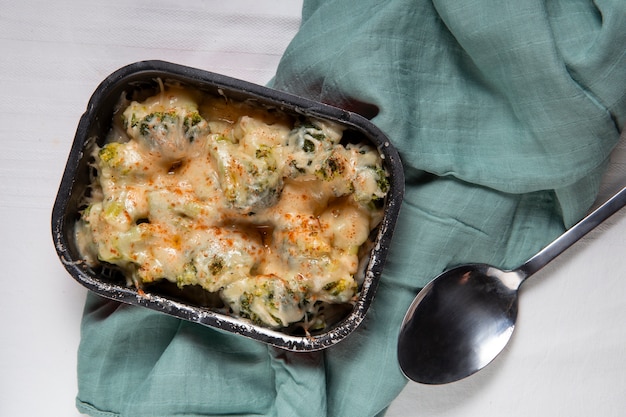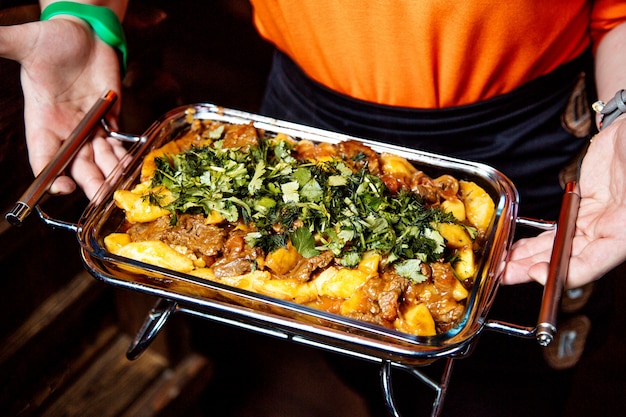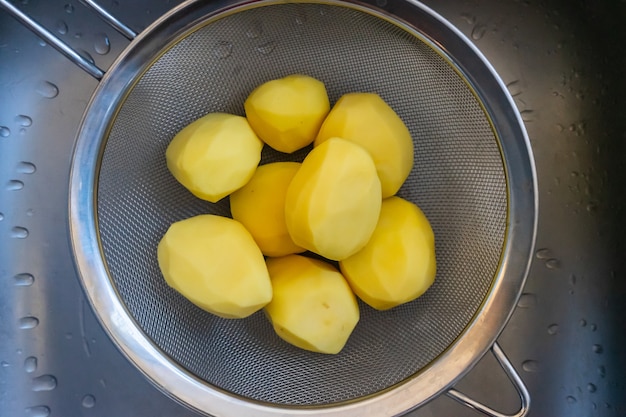(Part 1) Choosing the Right Spaghetti Squash

The Visual Check:
- Size Matters: You want a squash that's about the size of a football. Not too small, not too big. Think of it as the "Goldilocks" of squash.
- Firmness: Give it a gentle squeeze. It should feel firm, not soft or mushy.
- Colour: The colour can vary, but look for a deep, rich colour, whether it's yellow, orange, or even a bit green. It’s a sign of ripeness.
- No Blemishes: Avoid any squash with cuts, bruises, or soft spots. Those are tell-tale signs that it's starting to go bad.
The Feel Test:
Give the squash a good squeeze. It should feel firm, not too soft or mushy. If you can dent it with your finger, it's probably not ready.
(Part 2) Preparing the Squash: Let's Get Cooking

Washing and Cleaning:
First things first, give your squash a good wash under running water. Then, use a vegetable brush to get rid of any dirt or grime that might be clinging to the outside. Now, you can dry it off with a clean tea towel.
Cutting the Squash:
This is where things get a little bit interesting. Don't try and chop it like a regular vegetable, you need to cut it in half. Find a large, sharp knife – I use my chef's knife for this – and make a slice all the way around the middle of the squash.
Now, with your hands, gently twist the two halves apart. Be careful, the squash is going to be a bit slippery. It might help to have a kitchen towel nearby to grip it more securely.
Removing the Seeds:
Once you've got your two halves, you need to remove the seeds and the stringy bits. You can use a spoon to scoop them out, or even just your fingers if you're not squeamish. I find a spoon works best for getting everything out.
(Part 3) Baking the Spaghetti Squash

Preheat the Oven:
First, preheat your oven to 200°C (400°F). It's important to have the oven nice and hot to get the squash cooked through properly.
Place the Squash in the Oven:
Once the oven is preheated, place your two squash halves cut-side down on a baking sheet. You can use a roasting tin if you want, but a baking sheet is perfectly fine.
Bake Until Tender:
Now, let the squash bake for about 40-45 minutes, or until the flesh is tender and you can easily pierce it with a fork.
Let the Squash Cool:
Once the squash is cooked, take it out of the oven and let it cool for about 10 minutes. This will make it easier to handle and prevent any burns.
(Part 4) Scooping Out the Spaghetti Squash
This is my favorite part - the "spaghetti" part of the squash!Using a Fork:
Get a fork and gently scrape the flesh from the skin. It will come away in long, stringy strands that look just like spaghetti. This is why it's called "spaghetti squash."
Saving the Skin:
Don't throw away the skin! You can use it as a bowl for your spaghetti squash dish or to bake bread in. It's surprisingly sturdy.
(Part 5) Recipes: The Delicious Options
Now, here's where things get really exciting. There are so many delicious ways to use your oven-baked spaghetti squash. Here are some of my favorite recipes:spaghetti squash with tomato sauce:
This is a classic for a reason. It's simple, flavourful, and so easy to make. Just mix your favorite tomato sauce with the cooked squash and top with some parmesan cheese. You can add some fresh basil for a more vibrant taste.
Spaghetti Squash Carbonara:
For a more indulgent meal, try spaghetti squash carbonara. The creamy sauce is a perfect complement to the delicate flavour of the squash. It's surprisingly satisfying and feels like a real treat.
Spaghetti Squash with Pesto:
For a fresh and vibrant taste, try spaghetti squash with pesto. The basil and garlic in the pesto pair beautifully with the squash. You can even add some cherry tomatoes for a burst of sweetness.
Spaghetti Squash with Mushrooms and Sausage:
If you're looking for a more hearty meal, try spaghetti squash with mushrooms and sausage. It's a filling and flavorful dish that's sure to please everyone. Use a good quality italian sausage for the best flavour.
Spaghetti Squash and shrimp scampi:
For a light and flavorful meal, try spaghetti squash and shrimp scampi. The garlic, lemon, and white wine in the sauce create a delicious combination. It's a perfect dish for a warm summer evening.
(Part 6) Storing and Freezing
Once you've got your spaghetti squash, you'll want to know how to store it.Storing in the Fridge:
You can store the cooked spaghetti squash in the fridge for up to 3-4 days. Just place it in an airtight container.
Freezing the Squash:
To freeze spaghetti squash, simply place it in a freezer-safe bag and store it in the freezer for up to 3 months. It's best to freeze it after you've scooped out the flesh, as it will be easier to thaw and use later.
(Part 7) Tips and Tricks: The Secret Sauce
Over the years, I've picked up some tips and tricks that really make a difference.Adding Flavor:
To add a bit more flavour to your spaghetti squash, you can try roasting it with some herbs and spices like garlic powder, onion powder, paprika, or Italian seasoning. Experiment with different combinations to find your favorites!
Using the Skin:
Don't throw away the skin! You can use it as a bowl for your spaghetti squash dish or even bake bread in it. It's surprisingly sturdy. I've even seen people use it for a decorative touch in their home decor.
Experimenting with Flavors:
Don't be afraid to experiment with different flavours. You can add anything you like to your spaghetti squash, from vegetables and herbs to cheese and meat. I've even tried adding a bit of chili flakes for a spicy kick.
(Part 8) Nutrition and Health Benefits
Now, let's talk about why this squash is such a winner.Low in Calories:
Spaghetti squash is low in calories and fat, making it a healthy and satisfying choice for a meal. It's a great way to feel full without feeling weighed down.
High in Fiber:
It's a great source of fiber, which helps with digestion and can make you feel fuller for longer. This can be particularly helpful if you're trying to manage your weight or simply want to feel more energized throughout the day.
Packed with Vitamins and Minerals:
It's packed with vitamins and minerals, including vitamin C, vitamin A, and potassium. These nutrients are important for supporting a healthy immune system, vision, and blood pressure.
(Part 9) FAQs: Your Burning Questions Answered
Let's tackle some of the most common questions about spaghetti squash.Q1: How do I know when the spaghetti squash is done?
You can tell the squash is done when the flesh is tender and you can easily pierce it with a fork. You can also check the color of the squash, it should have a slightly translucent look. If you're unsure, it's always better to err on the side of caution and bake it for a few minutes longer.
Q2: How do I get the spaghetti squash out of the skin?
Just use a fork to gently scrape the flesh from the skin. It will come away in long, stringy strands that look just like spaghetti. If you find it difficult, try using two forks to separate the strands.
Q3: What if the spaghetti squash is too watery?
If your spaghetti squash is too watery, you can drain off the excess liquid before using it. You can also try baking the squash for a few minutes longer to help evaporate some of the moisture.
Q4: Can I use the spaghetti squash skin for anything else?
Yes! You can use the skin as a bowl for your spaghetti squash dish or even bake bread in it.
Q5: Is spaghetti squash good for weight loss?
Yes, it is! Spaghetti squash is low in calories and fat, making it a healthy and satisfying choice for a meal. It's also high in fiber, which can help you feel fuller for longer.
(Part 10) Conclusion: Get Cooking!
So there you have it! A complete guide to oven-baked spaghetti squash. I really hope you give it a try. It's a versatile ingredient that's perfect for all kinds of meals. You can whip up a quick and easy dinner or create something more complex and flavorful. Remember, don't be afraid to experiment and have fun with it!Now, go forth and conquer the world of spaghetti squash. You've got this!
(Part 11) Beyond the Basics: Exploring Creative Uses
Once you've mastered the basics, why not push the boundaries and get creative with your spaghetti squash?Sweet & Savory Combinations:
Try adding some maple syrup or honey to your spaghetti squash along with chopped pecans or walnuts. It's surprisingly delicious!
Soup Base:
Add some cooked spaghetti squash to your favorite soup recipe for a boost of flavor and texture. It adds a unique twist to classic soups like tomato soup or chicken noodle soup.
Breakfast Bowls:
Add some chopped spaghetti squash to your morning oatmeal or breakfast bowl. It's a great way to start your day with a healthy dose of fiber and nutrients.
Stuffing Alternative:
Use spaghetti squash as a base for your favorite stuffing recipes. It's a lighter and more flavorful alternative to bread-based stuffing.
Vegetable "Noodles":
Use a spiralizer to turn your spaghetti squash into "noodles" for a fun and healthy twist on pasta. You can use it in stir-fries, salads, or even as a side dish.
Spaghetti squash is a versatile ingredient with a surprising amount of potential. So, get creative, have fun, and discover all the delicious ways to enjoy this healthy and flavorful vegetable.
Everyone is watching

How to Cook Frozen Lobster Tails Perfectly: A Step-by-Step Guide
RecipesLobster. Just the word conjures up images of lavish meals, special occasions, and a taste of luxury. But let's...

Pigs in a Blanket Cooking Time: How Long to Bake for Perfect Results
RecipesAh, pigs in a blanket. Just the name conjures up images of those delightful little parcels of crispy pastry en...

Pork Fillet Cooking Time: How Long to Cook It Perfectly
RecipesPork fillet, or tenderloin as it's sometimes called, is a real favourite in our house. It's so versatile, and...

The Ultimate Guide to Tender, Juicy Pulled Pork
RecipesRight, let's talk pulled pork. It's one of those dishes that just screams "comfort food," doesn't it? I mean...

The Ultimate Guide to Cooking Delicious Frankfurters
RecipesLet's face it, we all love a good frankfurter. It's a classic, simple, and always satisfying. But let's be rea...
